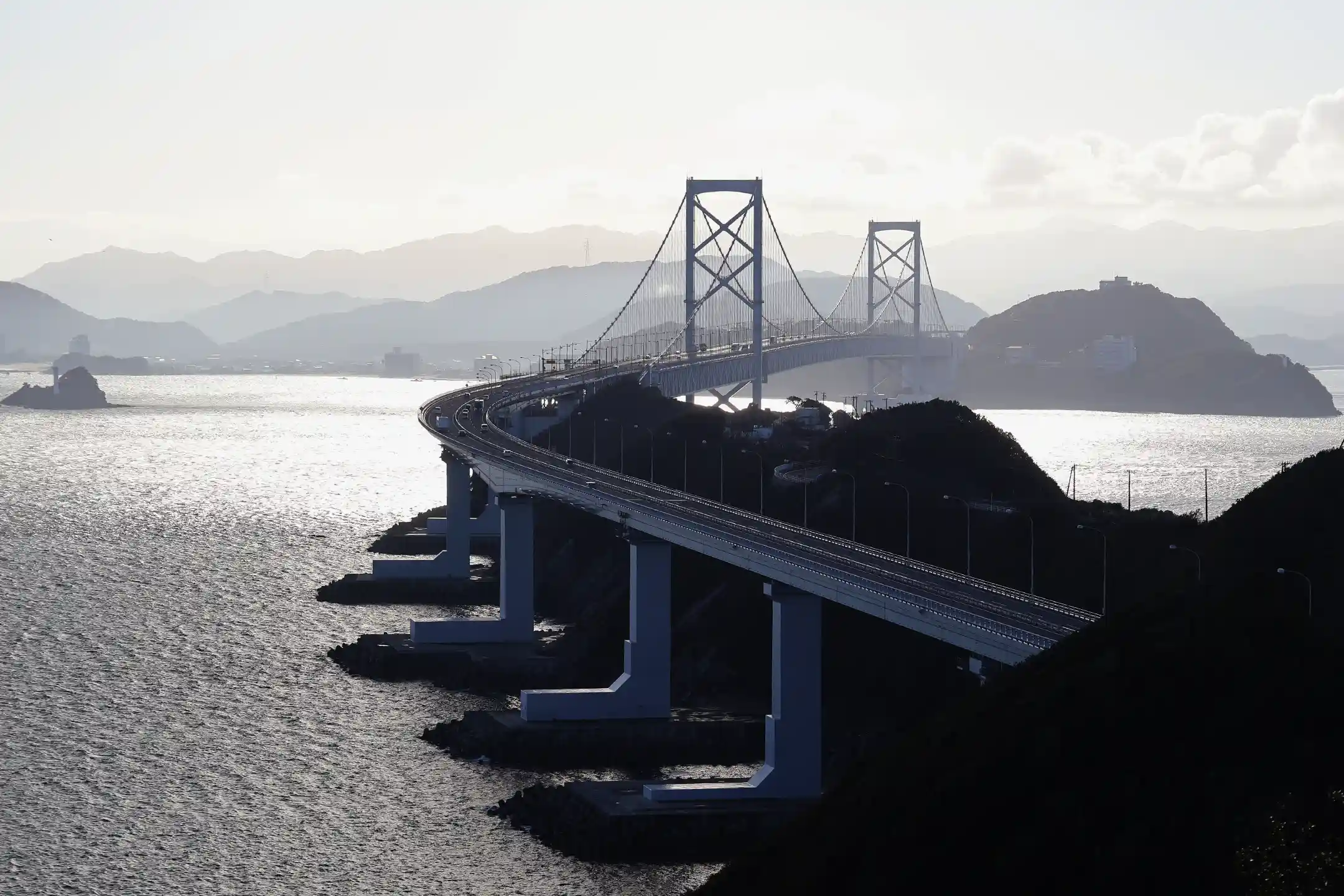With some of Japan’s richest natural landscapes and a storied mythological past, Awaji Island offers a high‑value journey where personal renewal and sustainability go hand in hand. Floating on the Seto Inland Sea, the island sharpens your senses through luxurious stays and invites you into deep, restorative experiences far from everyday life.
From community‑rooted wellness programs to organic dining and eco‑conscious lodging, time on Awaji becomes more than a moment on the road—it inspires positive shifts in your lifestyle long after you return. In this guide, you’ll explore Awaji Island’s appeal from multiple angles, discovering a place where generous nature and culture set the stage for a truly elevated trip. This guide draws on official sources and operator information current as of 2025 (linked below).
What and Where Is Awaji Island? Access & Essential Information
Blessed with a mild climate and profound history, Awaji Island sits in the southern part of Hyōgo Prefecture within the Seto Inland Sea and is the largest island in the Seto archipelago. Covering roughly 592 km², it is ringed by lush countryside and coastline. The island is celebrated in the ancient Kojiki as “the first special island born in Japan” and is honored as the setting of the nation‑forming myth. (Often searched as “awaji island” by international travelers.)
Awaji enjoys the warm, relatively dry Seto Inland Sea climate year‑round; with an average annual temperature of 15–17°C and no severe winters, you can visit comfortably in any season (*1). Spring to early summer—when fresh greenery and flowers are at their peak—and autumn—when the lingering heat eases and the air turns crisp—are especially recommended. In spring, the island bursts into bloom and hosts island‑wide festivals such as “Awaji Hana Matsuri” (*2).
Access is straightforward: the Akashi Kaikyō Bridge connects Awaji Island to Honshū, while the Ōnaruto Bridge links it to Shikoku, making overland travel easy. Public transport options include highway buses and fast boats; from Kobe/Akashi Port to Iwaya Port at the island’s northern tip, the high‑speed passenger boat takes about 13 minutes—a remarkably quick hop (*3). If you’re prioritizing the environment, consider pairing trains with the high‑speed boat and renting an EV on the island for a low‑carbon route. Shuttle buses connect major sights, allowing you to move comfortably using sustainable transport.
Home to about 120,000 people, the island thrives on agriculture, forestry, and fisheries. Signature products range from famed Awaji sweet onions and coastal seafood to Awaji beef—an abundance historically presented to the imperial court from this “Miketsukuni,” a region supplying food to the court. With its layered history, natural beauty, and culinary riches, Awaji Island is a perfect stage for a wellness‑forward, luxurious journey.
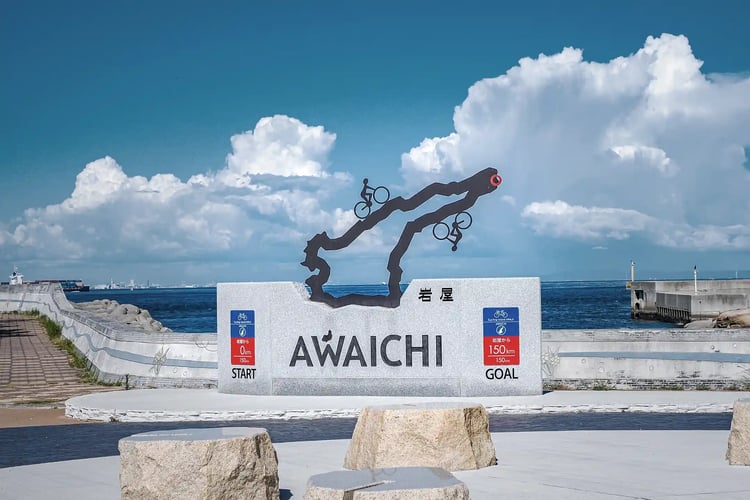
Healing Sites Where Awaji’s Myth and Nature Interweave
As the legendary cradle of Japan, Awaji Island is dotted with sites suffused with a sense of mystery. Across the island, mythic landmarks blend with natural scenery to create healing places that soothe mind and body.
At the heart of these is Izanagi Jingu (Izanagi Jingū) in central Awaji. Dedicated to the primordial deities Izanagi‑no‑Mikoto and Izanami‑no‑Mikoto—who appear in the opening creation myths of the Kojiki and Nihon Shoki—this shrine stands as the guardian of Awaji, said to be the first island formed in Japan. According to shrine tradition, after completing the great work of creating the land and the gods, the deity Izanagi entrusted sovereignty to Amaterasu and spent his remaining years in seclusion (yūkyū) here in Taga on Awaji (*1).
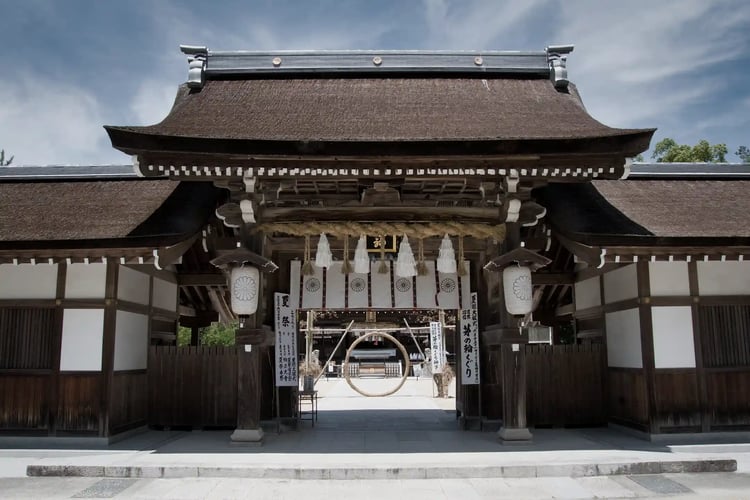
The sanctuary of Izanagi Jingu carries the dignity of an ancient holy site; the air on its grounds feels clear and solemn. As you walk the approach, you’ll meet the Meoto Ōkusunoki, a pair of sacred camphor trees more than 900 years old whose intertwined trunks symbolize marital harmony and blessed bonds (*2). Offer your prayers at the main hall and you may feel wrapped in the flow of nature and history—as if stepping into Japan’s creation story yourself.
At the island’s northern tip in Iwaya, a small islet called Eshima rises from the shore. Legend holds this to be one of the sites of Onokoro‑jima, formed when brine dripped from the tip of the heavenly spear (Ame‑no‑Nuboko) wielded by Izanagi and Izanami as they stirred the sea (*3). About 20 meters high and 400 meters around, Eshima’s wind‑ and wave‑carved strata have long been praised in classical poetry (*3). You can cross to the islet via a pedestrian bridge; a small torii atop the outcrop quietly invites you into the mythic realm. Nearby, other traces of Awaji Island’s role as the “island of creation” await—such as Onokorojima Shrine in Minamiawaji, marked by a striking vermilion torii.
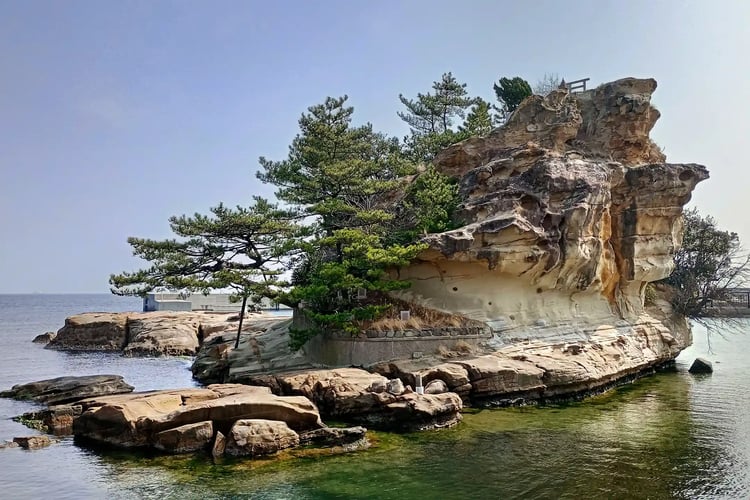
Sea‑ and Forest‑Based Wellness Programs on Awaji Island
Wellness programs held by quiet shores and in deep woods deliver profound calm—enhanced by Awaji Island’s rich natural setting. Step away from the rush, steady your breath, and move mindfully; you create space to meet yourself as you are. Below is an integrated introduction to zazen meditation, yoga, and forest therapy—standout experiences across the island. All can be provided in English, with private formats that help international guests feel fully at ease. By tuning your senses and resting attention in the “now,” these practices encourage deep relaxation and mindfulness—freeing you not only from travel fatigue but also from the stressors of daily life.
Zazen & Vegan Lunch at Zenbo Seinei
Tucked into the northern hills, Zenbo Seinei—a distinctive zen retreat designed by Pritzker Prize–winning architect Shigeru Ban—offers a singular setting for meditation.
A 100‑meter‑long wooden deck encircled by forest opens 360 degrees to seasonal vistas. At sunrise, birdsong greets the day; at night, the sky fills with stars—an open‑air stage in the heavens. Here, you settle into vegan‑leather zazen chairs, close your eyes under the guidance of an experienced teacher, and focus on your breath, attuning to breezes and birds across the treetops. In the quiet where distractions fall away, the time you spend facing inward becomes a detox from the ordinary.
After meditation, enjoy a vegan lunch served on site. “Zenbo cuisine” highlights organic vegetables and fermented foods from Awaji Island; beautifully plated and gentle on the body, each dish invites you to savor slowly until you feel nourished, heart and core. This zazen‑and‑vegan‑lunch experience offers an elegant pause from urban noise and a chance to listen inward. The calm and clarity you find here will travel with you long after you leave.
Morning Yoga at a Luxury Hotel in Southern Awaji
At Hotel Anaga, located on the southwestern tip of Minamiawaji City, greet the day with an early‑morning yoga session embraced by fresh air, ocean breezes, and birdsong. It begins at 6:30 a.m., focuses on breath, and gently awakens the body with a soft flow—ideal even if you’re new to yoga. In stillness, you fine‑tune balance in an outdoor session that truly tastes of “island morning” (*1). Note: the venue may change depending on weather.
Your instructor is Madoka Saito, a teacher with many years of experience. Under careful guidance, you release tightness and cultivate energy from within. The resort’s sea‑view setting offers uplifting openness; sunlight and the scent of the tide wrap the entire practice.
Pricing: ¥3,000 for junior high school students and older; ¥1,000 for elementary school students (not available for preschoolers). The session is limited to the first 10 participants; with groups of three or more, a ¥2,500 per‑person group rate applies. Includes one bottle of mineral water; yoga mats are provided (limited supply). Wear comfortable clothing and bring a towel and beverage.
Depending on the season, the morning YOGA program may be complemented by sunrise SUP yoga or a night pool session—letting you explore “time to recalibrate” from multiple angles during your summer resort stay. Bathed in pure morning air, the experience feels like a top‑tier resort spa; this garden yoga in harmony with nature is uniquely Awaji—and it prepares you to start the day’s travels at your best.
Forest Therapy at Awaji City Forest Park
Spread across the island’s center, Awaji City Forest Park is a restorative haven nurtured by Awaji’s rich woodlands. Well‑maintained trails invite anyone to wander. As you walk slowly and heighten all five senses, you can expect benefits such as reductions in stress hormones and boosts to immune function.
Before you begin, take a deep breath and fill your lungs with forest air. Thanks to the mild climate, Awaji’s woods stay verdant year‑round, and phytoncides—aromatic compounds released by trees—foster deep relaxation. During your walk, keep conversation to a minimum and listen for birdsong, the rustle of leaves, and, where there’s water, the murmur of a stream. After 20–30 minutes at an unhurried pace, pause in a small clearing for a brief “birdsong meditation.” By the time you finish the sequence, you may notice your heart rate settled and your head clear—quiet time in nature gently unknots modern fatigue.
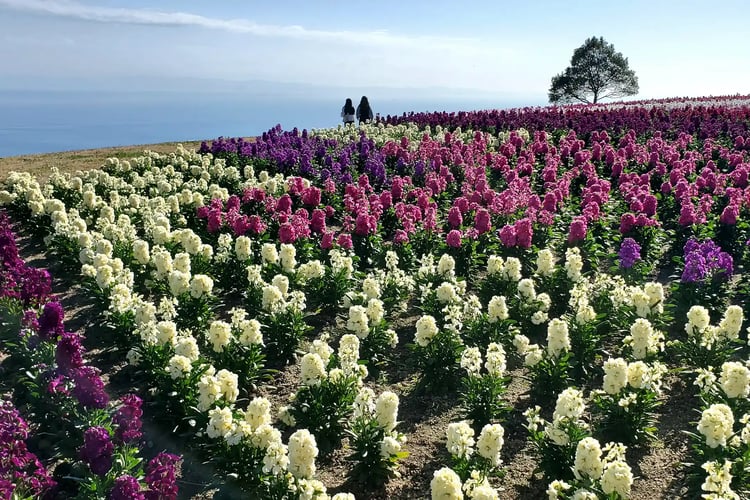
Organic & Farm‑to‑Table: An Awaji Island Gourmet Guide
Known as a treasure house of gastronomy, Awaji Island elevates your journey with meals that showcase ingredients raised by sea and land. For luxury travel, “delicious and sustainable” matters. Across the island, restaurants emphasize local sourcing, and farm‑to‑table initiatives in partnership with organic growers are flourishing—so you can savor food that’s gentle on the planet and your body.
Below are standout sustainability‑minded restaurants, along with a farmers’ market and cooking experiences that help you learn about the ingredients themselves. Wherever you go, you’ll find care for the story behind each ingredient and the reassurance of knowing your producers—all in service of unforgettable flavor.
SEIKAIHA Umi no Ya — Sustainable French
Born from the renovation of a historic residence on Awaji Island’s west coast, SEIKAIHA Umi no Ya blends the ambiance of a classic Western manor with live music in a restaurant‑café setting. As the sun sinks over Harimanada—one of Japan’s “Top 100 Sunsets”—you’ll sample inventive French‑based dishes that lavishly feature the island’s seasonal produce. Chef Haruyuki Yamashita, a laureate of global culinary competitions, oversees the menu; the courses—rich in Awaji’s seasonal ingredients—win over even the most exacting gourmets (*1).
Starters might include a terrine of just‑picked vegetables or a plate perfumed with house‑grown herbs; mains could feature local sea bass or Awaji beef—expressions of the season’s unique palate. Inside, antique furniture and Venetian glass lighting create a refined, retro atmosphere evoking Taishō‑era romance. With the Seto seascape beyond the windows, you settle into an unhurried meal. Alongside prix‑fixe menus, à la carte and café selections are abundant—don’t miss seasonal desserts that showcase Awaji Island fruits. Dining at Umi no Ya proves that environmental care and indulgent flavor can coexist beautifully.
Nomad Resort・miele — Locally Sourced Buffet
Known as “the honey café with an ocean view,” miele on Awaji’s west coast features an open terrace that fronts a white‑sand beach. True to the Italian name for “honey,” the café brims with island honey specialties; signature honey pizza and honey curry draw devotees from near and far.
In 2025, miele renewed under the concept “the honey café & pizzeria with an ocean view,” further spotlighting Awaji Island’s scenery and culinary appeal (*1). Since opening, the kitchen has remained faithful to fresh Awaji ingredients and honey—an approach beloved by many visitors (*2).
Think gourmet burgers with Awaji beef, salads piled with island vegetables, and for dessert, yogurt bowls crowned with seasonal fruit and raw organic acacia honey. The honey comes from Biene Biene, an island apiary producing organic acacia honey whose delicate sweetness and aroma deepen each dish (*3).
Breakfast buffets and weekend brunch are also popular—expect salad bars stocked with just‑harvested greens from local farms and oven‑fresh breads served with house‑made jams and honey, all embodying the farm‑to‑table spirit. Savoring a locally sourced buffet as you gaze at the sea and feel the breeze nourishes body and mind—an exquisite moment by the water.
Farmers’ Market Experience
To go deeper into Awaji Island’s ingredients, meet producers directly at a local farmers’ market and join a cooking workshop using what you’ve sourced. In Minamiawaji City, Minacoicoiya—one of Hyōgo’s largest direct‑from‑producer markets—overflows with just‑harvested vegetables and fruits, Awaji beef, and fresh fish delivered from farms and boats across the island (*1).
From morning‑picked lettuces and tomatoes to just‑landed seafood, eggs laid that day, and small‑batch jams, the market gathers the authentic tastes of Awaji under one roof—energetic, vivid, and alive. Awaji onions are famous, of course, but here you’ll also find organic JAS‑certified, pesticide‑free onions and heirloom vegetables—ideal for sustainability‑minded shopping.
Staff and vendors are happy to chat about cultivation and cooking tips, so don’t hesitate to strike up a conversation. Through market visits and cooking workshops, you encounter Awaji Island’s food culture and farmers’ dedication—a true luxury of learning with all five senses. Before you leave, consider stocking up on favorites like additive‑free Awaji onion soup powder or moshio (seaweed salt). They’ll let you relive the island’s flavors and memories back home.
.webp?width=750&height=500&name=Sumoto%20Castle_s%20Mock%20Tenshu%20(Castle%20Tower).webp)
Luxury Stays with Environmental Stewardship on Awaji Island
What makes your time on Awaji Island unforgettable is lodging that protects your privacy while caring for the environment. Immersed in grand nature and thoughtful service, your stay becomes even more rewarding. In recent years, the island’s luxury properties have advanced sustainability—embracing renewable energy and circular, community‑based operations.
Below are distinctive options—from stargazing glamping to Japanese‑modern hotels and onsen resorts—that feel uniquely Awaji. Each takes a different approach, yet all deliver “luxury that’s kind to the earth.”
Starry‑Sky Glamping at GRAND CHARIOT Hokutoshichisei 135°
Set within the Hyōgo Prefectural Awaji Island Park, GRAND CHARIOT Hokutoshichisei 135° lines a hillside with cocoon‑like villa suites—an unforgettable take on glamping. The “135°” in its name refers to Japan’s Standard Time meridian (E135°).
From these detached villas, you look over the sea and a sky thick with stars. Each suite features a skylight more than 5 meters high so you can stargaze from bed—earning the nickname “natural planetarium” (*1). At night, lighting across the grounds is dimmed to let starlight lead the way. On request, staff can guide a stargazing‑meditation program as well. Suites are crafted entirely of natural wood, with island crafts accenting a refined Japanese‑modern aesthetic.
Each features a hinoki bath; soaking in fragrant cypress while gazing at the stars is pure indulgence. Dine in the on‑site restaurant on special menus that spotlight Awaji Island’s seasonal produce, or in summer, enjoy a private BBQ on your terrace featuring Awaji beef and uni from Yura. Luxury here aligns with a sustainable vision for the future—an ideal of travel for the years ahead.
Ocean Views at Another Ocean Awaji Villa
Facing the gentle Seto Inland Sea, Another Ocean Awaji Villa is a fully private luxury stay—one group per day—in a tranquil setting far from city noise. It’s a new‑era boutique retreat that prizes privacy, wellness, and sustainability. From inside, the vista opens to Osaka Bay; step onto the terrace and the breeze and surf create a natural sense of release.
The interiors fuse Japanese craft aesthetics with contemporary comfort, shaping a warm, restorative space. Dining follows an organic and local ethos. Invite a private chef to cook in the villa kitchen, choosing from French to Japanese courses—each centered on Awaji Island ingredients and designed for both flavor and balanced nutrition. Beyond taste, the commitment to local sourcing reduces food miles and puts sustainable gastronomy into practice. With sweeping ocean views, a responsible operating philosophy, and elements that restore both body and mind, your stay becomes a gift to yourself—and to the earth.
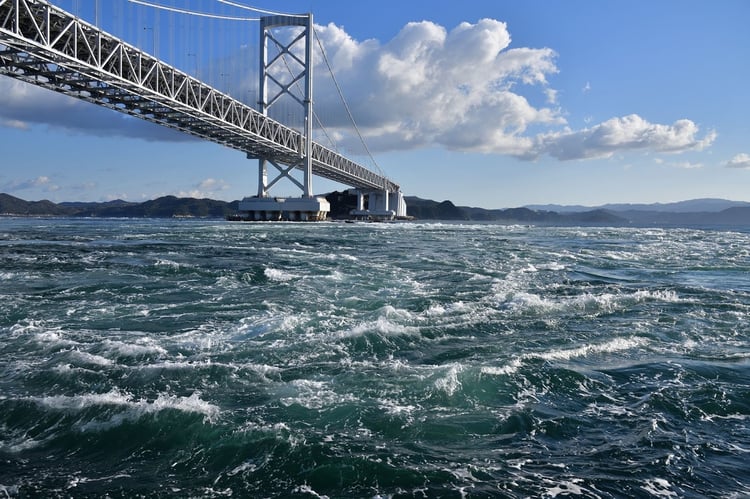
Thalassotherapy at Awaji Hamarikyu in the Minamiawaji Onsen District
Overlooking Keino Matsubara Beach in Minamiawaji City, Hotel New Awaji Bettei Awaji Hamarikyu evokes the elegance of Meiji‑ and Taishō‑era Western villas and features free‑flowing hot springs in a classic resort setting. A cohesive, nostalgic blend of Japanese and Western design feels almost like time travel. All rooms are 54 m² or larger, and 13 include private open‑air baths.
Top suites feature Kiso‑hinoki open‑air tubs on the terrace, where you can soak in famed waters while feeling the sea breeze. Drawn from the southern part of the island, Uzushio Onsen “Ten‑no‑Yu” is an alkaline “beauty bath” rich in sodium bicarbonate; its silky touch is surprisingly lush, and guests say their skin feels smooth enough to skip lotion after bathing (*1). Hamarikyu’s spa programs also incorporate thalassotherapy, a French‑born marine‑based approach. At Robina SPA, treatments use seaweed extracts and sea salt; in the mineral‑rich “tidal‑bath” steam sauna, applying salt to the skin enhances both detox and beauty benefits (*2).
After a generous sweat, rinse with cool water to tone the skin, then repeat hot‑cold bathing; you’ll feel your metabolism rev up and fatigue release from within. Finish by reclining on a daybed on the sea‑breeze‑kissed wooden deck—waves whispering through the pines guide you into deep relaxation. Blending time‑honored healing springs with contemporary marine therapy, Hamarikyu’s wellness program is the epitome of mind‑and‑body renewal.
Well‑Being That Lasts After Your Trip — Habits to Bring Home from Awaji
The wellness and sustainable‑living wisdom you experienced on Awaji Island can continue to work in your daily life. Take the sensibilities you honed and the practices you learned in extraordinary surroundings and apply them back in the city. Below are concrete habits to elevate your post‑trip well‑being. Even on the busiest days, recalling your time on Awaji Island as you practice will help you find balance more easily.
An Awaji‑Style Morning Ritual at Home
Recreate Awaji Island’s gentle mornings at home. Start with a five‑minute citrus‑aroma breath meditation and yoga flow. Citrus grows abundantly on Awaji—lemons, hassaku, and more. Prepare an essential oil from Awaji citrus. After a glass of water, sit on your mat and place 1–2 drops in a diffuser or on a handkerchief. Breathe diaphragmatically as the bright citrus aroma steadies your nervous system. Next, move through a short flow based on Sun Salutation. Lift your arms and inhale to lengthen, fold forward and exhale completely, then place hands on thighs to lengthen your back as you inhale—repeat the sequence at your own pace for two or three sets. The key is never to force—stretch only within comfort. Finish with about a minute of Śavāsana, lying on your back with eyes closed and attention on the breath.
Sustainable Products from Awaji to Enjoy After You Return
Bringing favorite finds from Awaji Island into everyday use extends your trip’s benefits. Awaji‑made foods and cosmetics reflect a sustainable philosophy and high quality. A classic pick is Awaji onion soup powder.
Contract farmers grow onions without chemical fertilizers; slow‑roasting and powdering yields a soup base with natural sweetness and depth—just add hot water. Free from artificial flavorings and preservatives, it’s ideal for busy mornings or cozy breaks. Awaji essential oils are also standouts. Extracted from pesticide‑free lavender and citrus grown on the island, they revive your getaway calm when used for aromatherapy or massage.
Gentle bamboo‑fiber towels and scrub soaps blended with island moshio (seaweed salt) are other excellent, sustainable daily goods. Make them your souvenirs and part of your routine—you’ll recall Awaji Island’s healing moments in an instant. From London, you can still touch the island through scent and flavor. These products are not only eco‑friendly but also reliably premium—perfect for you and as thoughtful gifts. To keep the mindset of “cherishing well‑made things for the long term,” weave your favorite sustainable products into your life.
Carbon Offsetting and Your Next Trip to Japan
To close the loop on your journey, consider carbon offsetting. Calculate the CO₂ from your round‑trip flight to Japan and your in‑country transport and lodging, then purchase carbon credits to offset the total. Airlines and travel companies increasingly offer easy calculators, and you can offset by supporting certified forest‑conservation projects or renewable‑energy initiatives. If your time on Awaji Island deepened your appreciation for nature, joining such programs lets you give back as a meaningful finale to the trip.
You might also participate in SDGs‑aligned donation programs ahead of your next visit—such as contributing to environmental funds run by local governments on Awaji or donating to satoyama (woodland) conservation, even in small amounts, as a way to “support through travel.” When planning your return, use this experience to design a longer, lower‑impact itinerary: opt for direct flights and public transit, and choose eco‑friendly accommodations—there are many ways to refine your footprint.
Encouragingly, Awaji Island has recently been selected by Japan’s Ministry of the Environment as a “Decarbonization Leading Area,” underscoring its commitment to sustainable tourism (). By the time you come back, you’ll likely find new green activities and facilities to explore. The trip may end, but your wellness journey continues—carry the habits and insights you gained on Awaji forward and enjoy a richer, more sustainable lifestyle.
Closing
A sustainable wellness journey on Awaji Island transcends mere sightseeing, offering a rare chance to reconnect with nature, culture, and a forward‑looking way of life. Nurturing both body and spirit while supporting local communities and respecting the environment, this form of travel is fast becoming the new standard of luxury.
From silent moments of zazen to stargazing glamping nights, and farm‑to‑table dining that celebrates the island’s bounty, the sensations you experience here will continue to resonate long after your return, enriching your daily life. And when you envision your next journey, the sustainable perspective and deep sense of healing cultivated on Awaji Island will surely guide you back to Japan’s timeless beauty of nature and culture.



